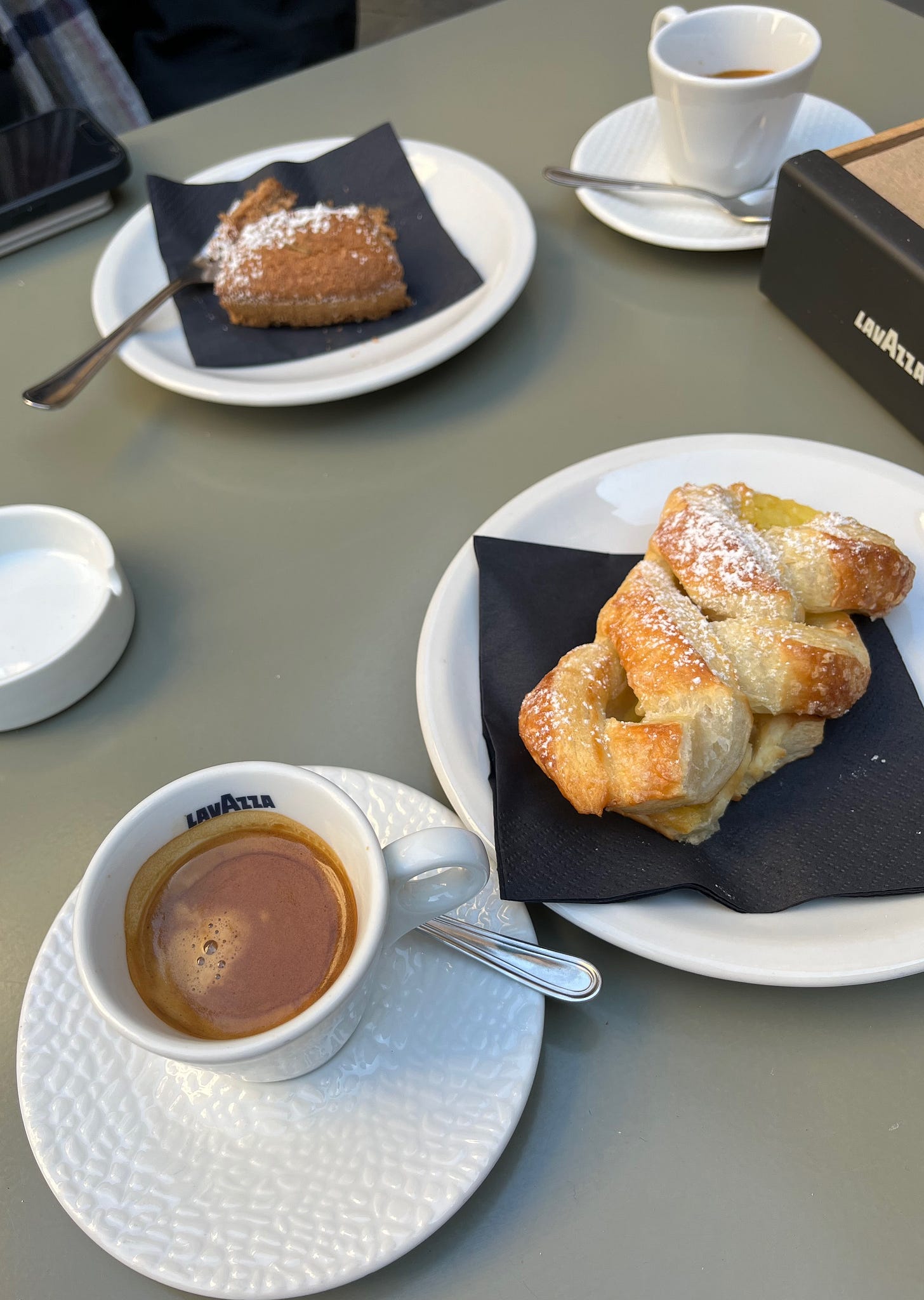People often tell me I’m an interesting conversation-partner. What I know is that I’m interested and curious. I jot down notes when I read a book, think about a question, or find an interesting reference.
Every year-end, I go through my notebook(s) as a way of summary for the year.
In this first entry of the year, I want to invite you to a dinner conversation with me. The things I think about and tell trees daily are less random and more interesting than I remembered.
Here are some highlights.
Reminder: You can get extra insights—in-depth information, ideas, and interviews on the value of culture.
Join the premium list to access new series, topic break-downs, and The Vault.
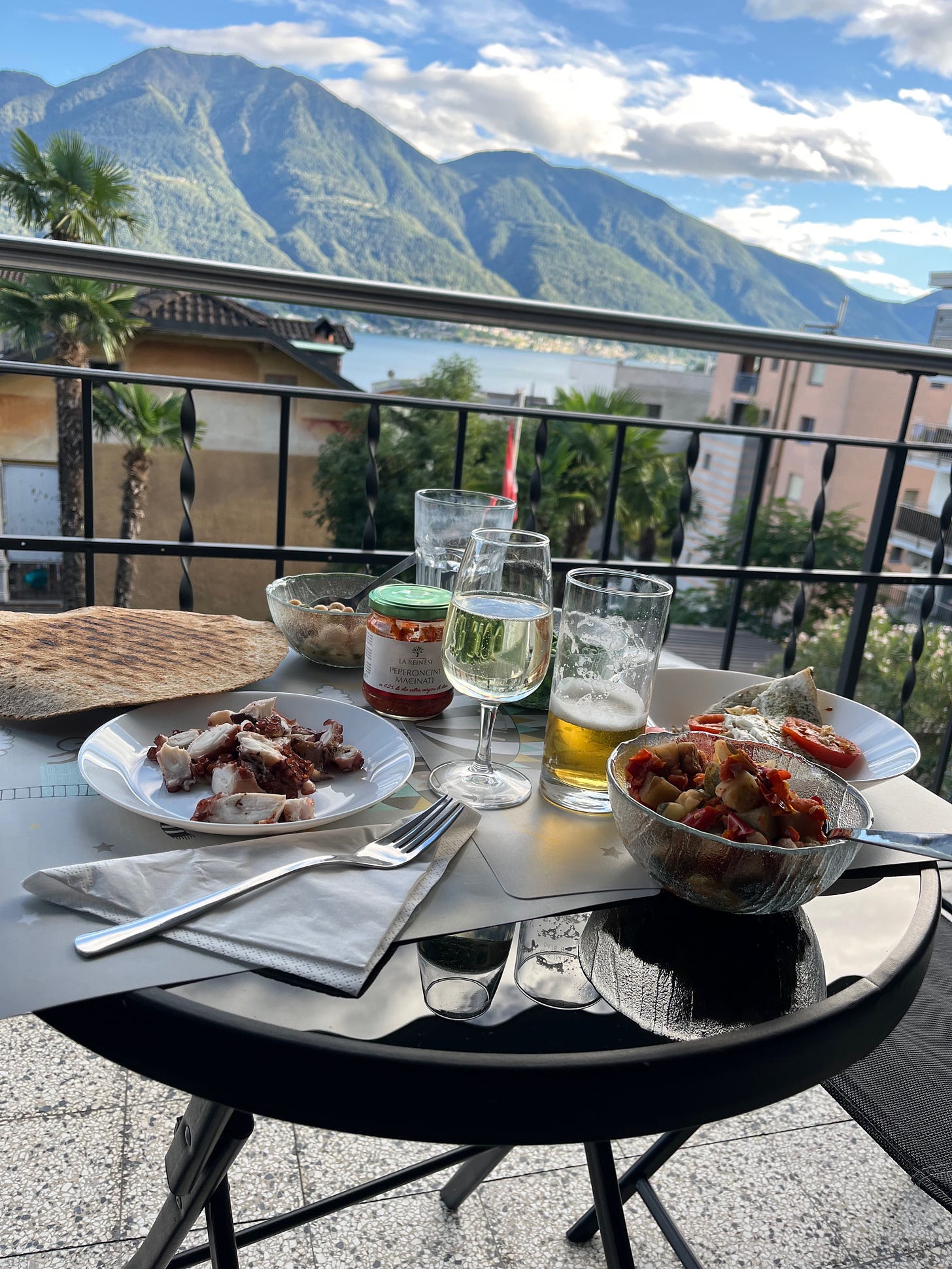
The arts and humanities can contribute much to our lives. Because they’re based on age-old troubles that involve clashing identities, colliding interests, and opposing beliefs. We can’t simply engineer our way out of today’s most intractable conflicts.
For example, who’s behind artificial intelligence (AI), what criteria are they using? Is there transparency in their methods? What interests do these programs follow? Where does the ‘long game’ lead? (There is a long game, look at Amazon, Meta, etc.)
We can begin to address these conflicts if we understand the deep roots they have in the cultural past. Compare the feudal system with the digital system—what are the similarities? As I said in 2009 when social media had become like sharecropping,
“Businesses working social media channels are sharecroppers. So are all the users. They labor on the services, both creating and receiving value. But they don't own the fields they cultivate, and can be put off the land whenever it suits the landlord. That's fine, if one can afford to leave crops rotting in the field. It's not so cool if you have to explain why a media line item has suddenly come to grief.”
Engineers won’t help us make sense of this tangle. Improving humanity is not a technology problem. Only the humanities provide the tools to sift through the cultural past. “The culture of the past is the ground on which new cultures grow,” says Martin Puchner in Culture.1
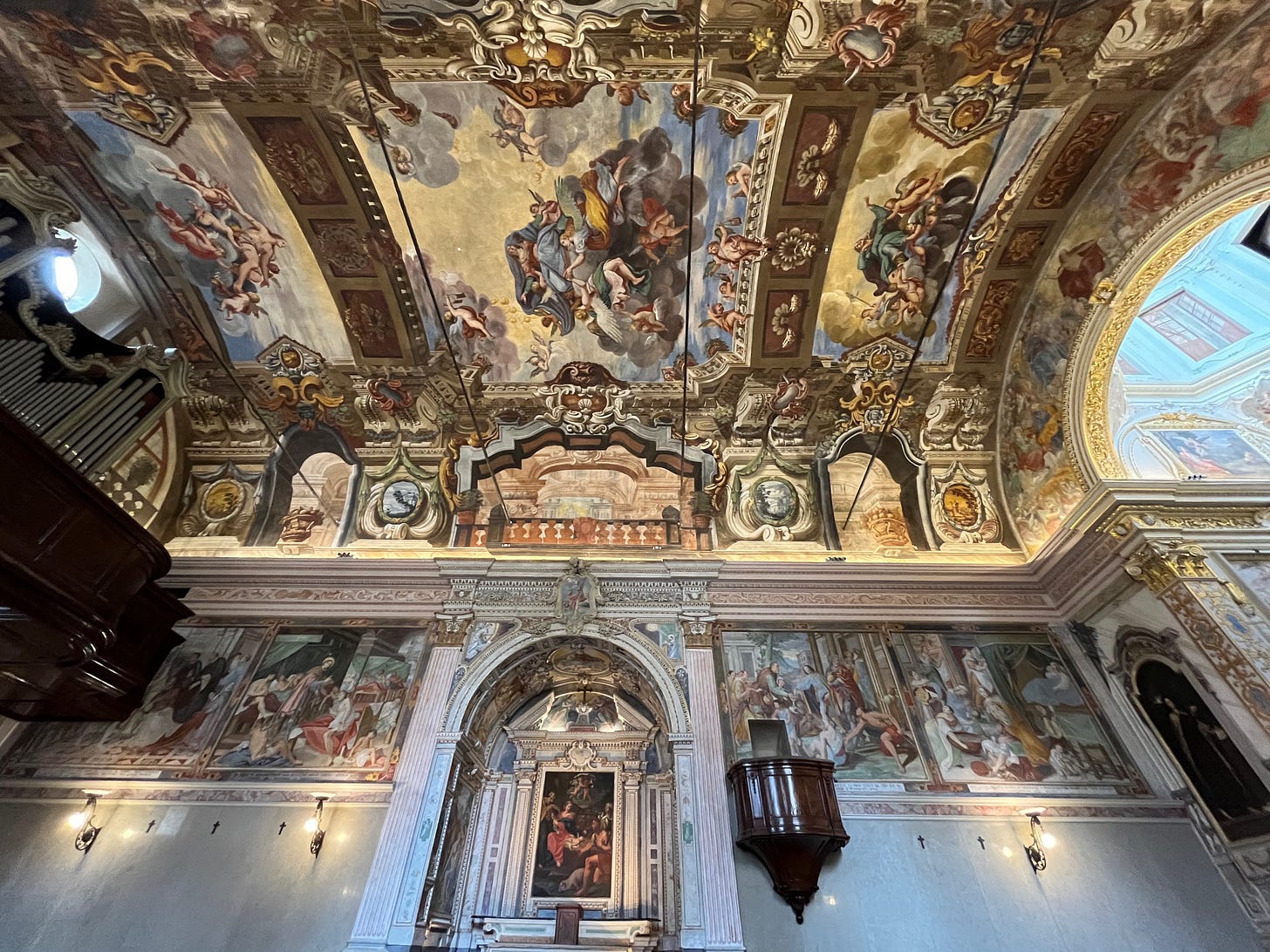
When we moved away from spiritual belief and enchantment to go toward (perceived) rationality, we began to re-imagine the nature of reality. Philosopher Charles Taylor calls it the shift to the secular age.
God or the idea of god moved inside us and took form in human desires.
Hence began the ‘to strive,’ ‘to seek,’ and ‘to be’ narrative—we must shape our path and place in life. “If we don’t manage to determine our destiny, we’ve failed at what it means to be human,” says Tara Isabella Burton in Self-Made.2
A re-imagination of the relationship between divine law, natural law, and social order followed. Hence began the gradual focus on the self and the gradual, then sudden, materialization of the cult of self-help.
The myth of the ‘self-made man’ turned confidence into arrogance. This cultural transformation was a shift in belief—human beings have the power and right to shape their own lives and destiny.
Birth, blood, religious superstition, unexamined social mores became all customs (the reason we do things not because we ought to) that alienate us from our true, natural state. We’re truly free when we’re truly ourselves, free from moral and political authority.
Customs are arbitrary, hence disenchantment leads to a new social, philosophical, scientific, and intellectual movement. Enlightenment, the age of reason, marked the apparent triumph of rationality over romanticism.
Has ‘man emerged from his self-imposed immaturity’? As Immanuel Kant stated.
As we think about that (my word of the year was adultescence), it’s useful to consider that the self-maker thought himself (and it was men all the way down nearly to the Kardashians) is above the rules, beyond the norm. The 1772 dictum is with us today.
Lest we forget, the Marquis de Sade mastered the connection between disenchantment with custom and the divinization of the self. There are similarities to how Silicon Valley found religion. Complete with a new Ministry of Empowerment.
Make no mistake, it’s all about power. That of the bodies (anybody or somebody) keen on exploitation, of which social media is rife. And that of the chiefs in wealth. Even behind the algorithms there are bodies. When tech giants (few bodies) lead the narrative, we don’t deal with the issues their platforms create for society.
Another useful thread from the past—the ascent of Phineas Taylor Barnum, son of an innkeeper in Connecticut, turned showman, hoaxer, and politician who built the Barnum & Biley Circus. He got his start in newspaper publishing and exploited media’s hunger for sensationalism.
“Whatever has value in our world now does not have value in itself, according to its nature—nature is always value-less—but has been given value at some time, as a present—and it was we who gave and bestowed it—only we have created the world that concerns man!”
The Gay Science, 1887
The self became both the arbiter of what was good, and the measure of value. I can see the ties with Mussolini and fascism, the signs of which are still everywhere in Italy (train stations, official buildings, the typeset, statues, even sewer portholes.)
American post-war anxieties about authenticity, truth, and the role of the self in society were the impetus that gave birth to Andy Warhol’s superstars. Politics is downstream from culture, and history is fertile ground for answers.
Our crisis is cultural, then spiritual.
The lack of relationships stems from an attempt to be gods.
The quest for perfection leads to homogeneity and control.
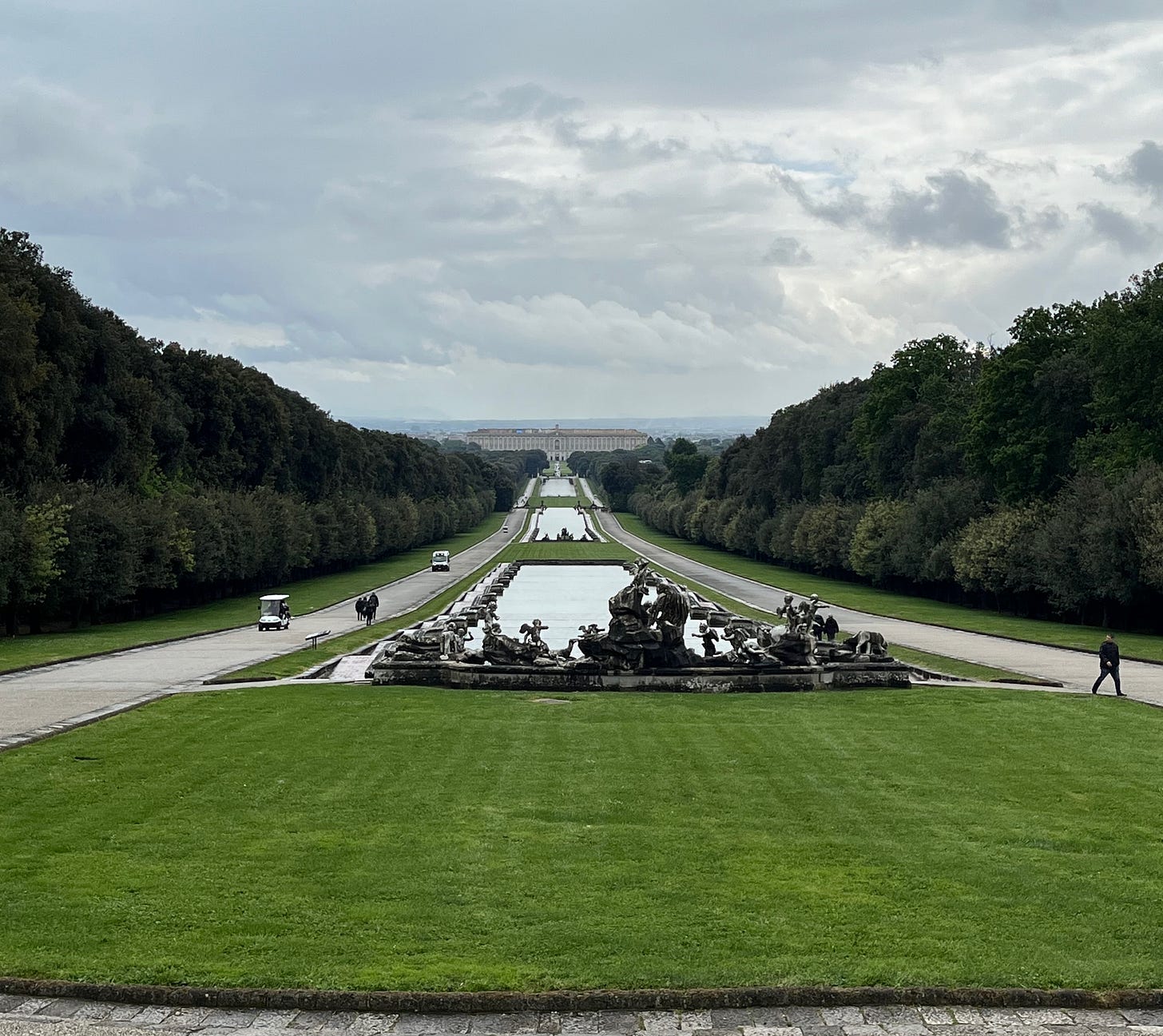
All lasting human cultures have been rooted, tied down to something more solid, timeless, and lasting than the day-to-day process of their functioning, or the personal desires of the individuals who inhabit them.
Some are human creation:
cultural tradition (we’re the most ritualistic at Christmas time)
a sense of lineage and ancestry
ceremonies designed for worship or initiation
Other are non-human, of the natural world on which those cultures dwell, or the divine force that they worship and communicate in some form.
We need those roots for a sense of belonging to something that is deeper than us—across both space and time (itself a fascinating concept.) And we underestimate that need at our own peril.
In 1943, the Free French in London (quite ironic, really) led by Charles de Gaulle commissioned Simone Weil to write a pamphlet. The Need for Roots3 was the result.
“The notion of obligations comes before that of rights, which is subordinate and relative to the former.
“A right is not effectual by itself, but only in relation to the obligation to which it corresponds, the effective exercise of a right springing NOT from the individual who possesses it, but from OTHER MEN being under a certain obligation towards him.
“Recognition of an obligation makes it effectual.
“An obligation which goes unrecognized by anybody loses nothing of the full force of its existence.
“A right which goes unrecognized by anybody is not worth very much.
“Rights are always found to be related to certain conditions.
“A man left alone in the universe would have no rights whatever, BUT HE WOULD HAVE OBLIGATIONS.
“Obligations alone remain situated above and independent of all conditions.
There’s more in the text, but you get the idea. From the first section—Needs of the Soul—to the second section, Weil takes up the question of existence without these needs fulfilled.
That’s ‘Uprootedness,’ the longest section of the book, and perhaps easier to follow as they are examinations by example. For example:
“…During the last few centuries, but especially in the last fifty years, the white man has carried the disease of uprootedness (colonial exploitation) from which they (themselves) are suffering.
“as for the American continent, since its population has for several centuries been founded above all on immigration [and slavery], the dominating influence which it will probably exercise greatly increases the danger.
“What makes it so difficult for our culture to be communicated to the people is not that it is too high, but that it is too low.
“We apply a strange remedy, indeed, by lowering it still further before distributing it to them in little doses.
The book concludes with The Growing of Roots, which become a grand closure of principle and hope.
“Four obstacles above all separate us from a form of civilization likely to be worth something: our false conception of greatness; the degradation of the sentiment of justice; our idolization of money; and our lack of religious inspiration.”
To Weil and the Free French, there needed to be a transformation of the meaning attached to greatness and value.
Italians existed before Italy formed. Italy itself began to exist in art, literature, and music. Politics arrived later and often stumbling. On Italy before Italy wrote magnificently Alessandro Manzoni and Giacomo Leopardi.4
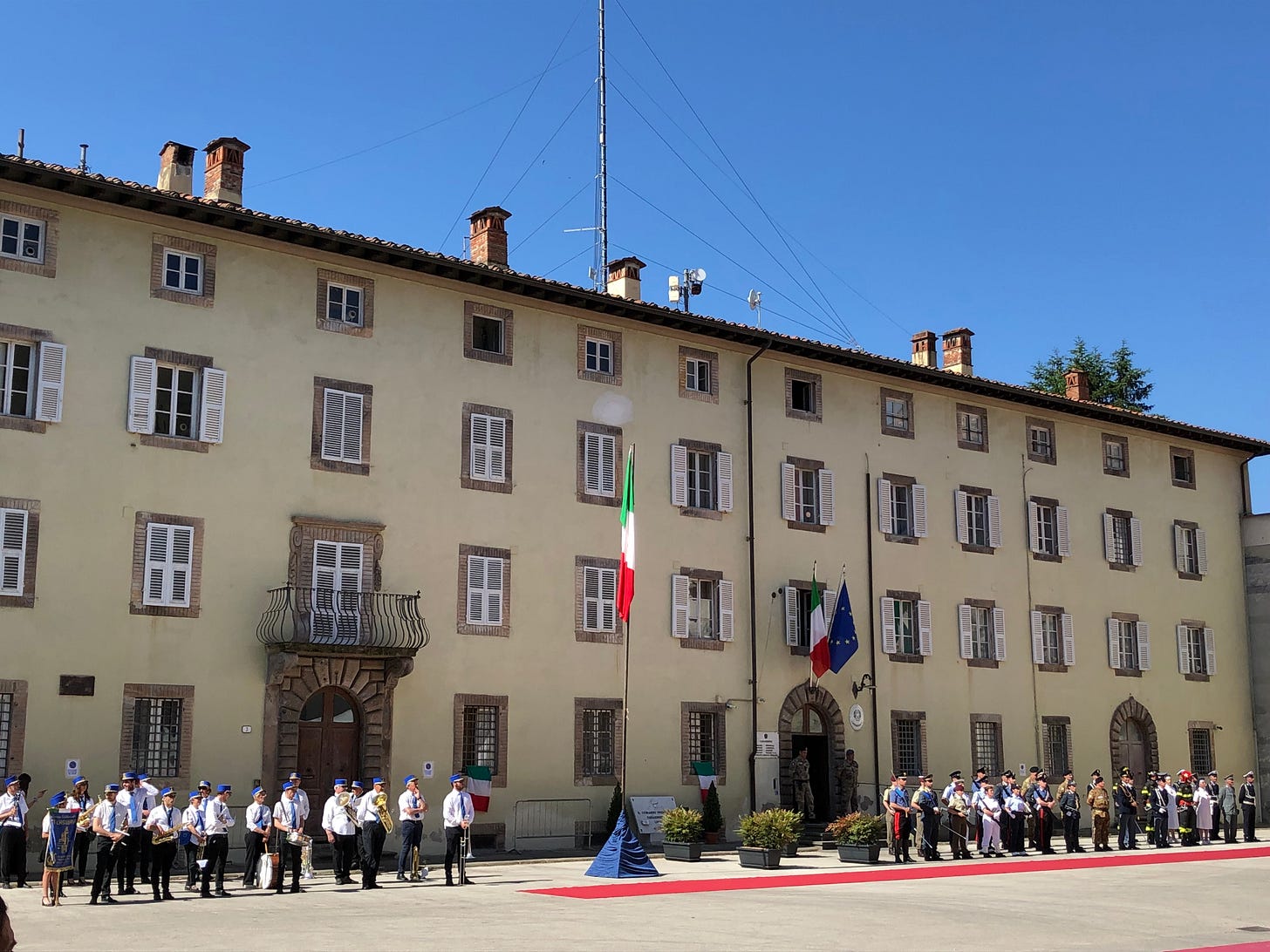
Then, after the unification, Federico de Roberto, Natalia Ginsburg, Tommaso di Lampedusa, Beppe Fenoglio, Alberto Moravia, Pier Paolo Pasolini, Amelia Rosselli, Elsa Morante, as did Giorgio de Chirico,5 Giuseppe Verdi, Federico Fellini, and Mina.
Few artists represent the cultural history of late twentieth-century Italy, fewer yet embodied the beauty and power of music with the freshness, irony, and curiosity Mina does—over sixty years.
We’re witnessing the mechanization and fragmentation of all aspects of intellectual and emotional life, including the libidinal.
A thought inspired by North American advertising that was part of my research on Marshall McLuhan.
It’s the age of ‘techno-winner-takes-all-capitalism.’ The shift from contemplation to immersive experience is sold as liberating. An emphasis on experience—embodied, sensory, overwhelming—is not the work of art.
Art faces pressures of representation in the present. There’s no time for art, because we cannot afford the slowness of thinking that representation demands. Meaning is not self-evident. The technique through which art is mediated solicits contemplation.
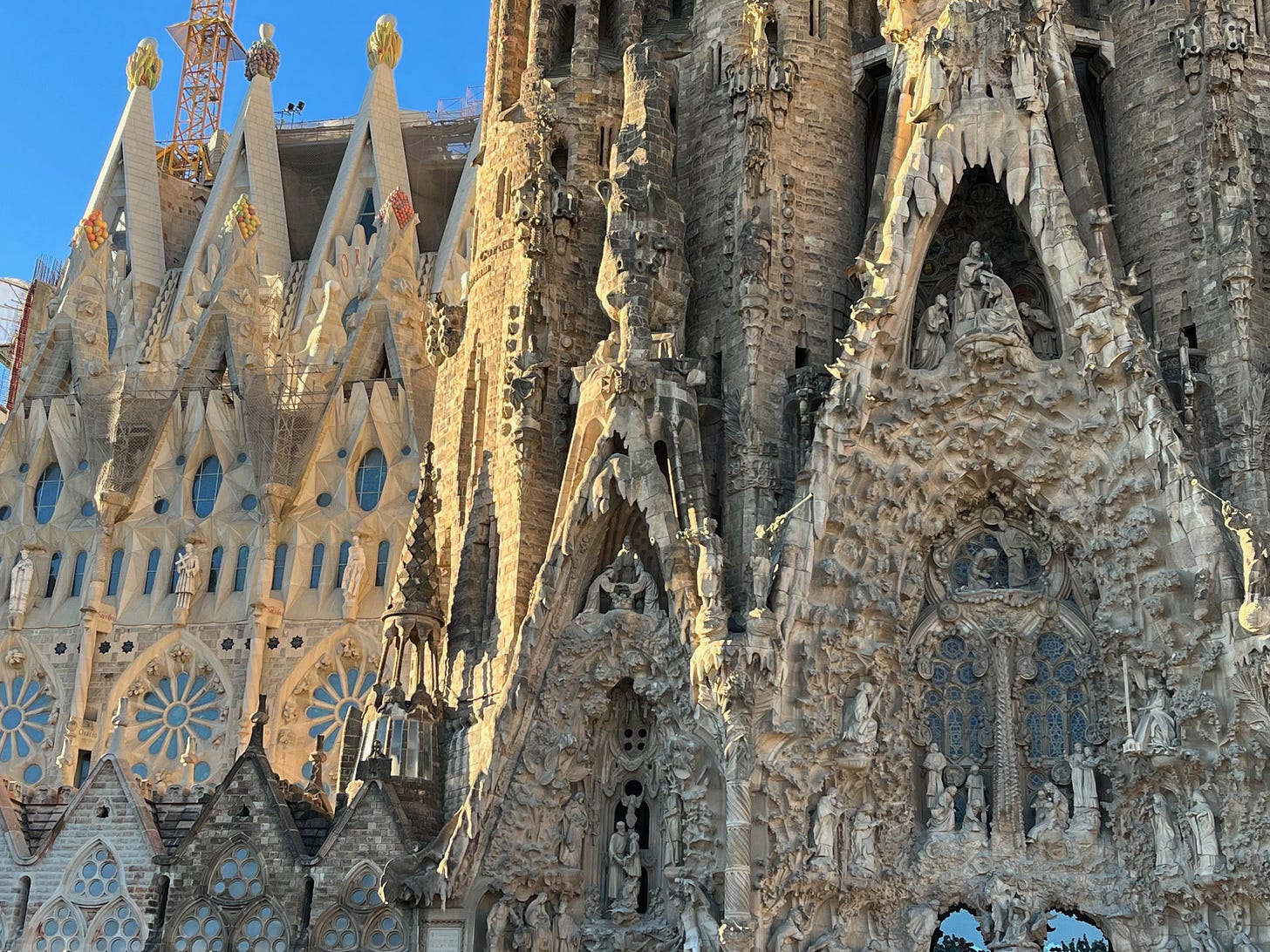
A rejection of art is inexpensive, because there’s more profit from exchanging (money) than making. But who loses out? And what have we lost?
The idea of trust is vital to value.
Media amplifies tiny groups of people as if they represented larger crowds.
As there are limits to human knowledge, there are limits of government to transform society and lift the crushing burdens of existential meaning and identity.
Coffee’s history leads to one of the main arguments that contributed to the rationalization and development of Europe. (Once it substituted beer in the 18th century’s diet.)
Coffee houses also provided a place where people could meet and lead sober discussions on life and politics.
I have an entire section of my notebook dedicated to history—the history of humans, but also of knowledge, e.g., history of physics, mathematics, philosophy, etc. ‘How’ what we ‘know’ today developed is as important as ‘what’ it stipulates.
But that shall be for another time. This compilation is long enough as is. I’d like to end with a hopeful note, to believe that we can and will resist the baser impulses and embrace art and its value to human expression.
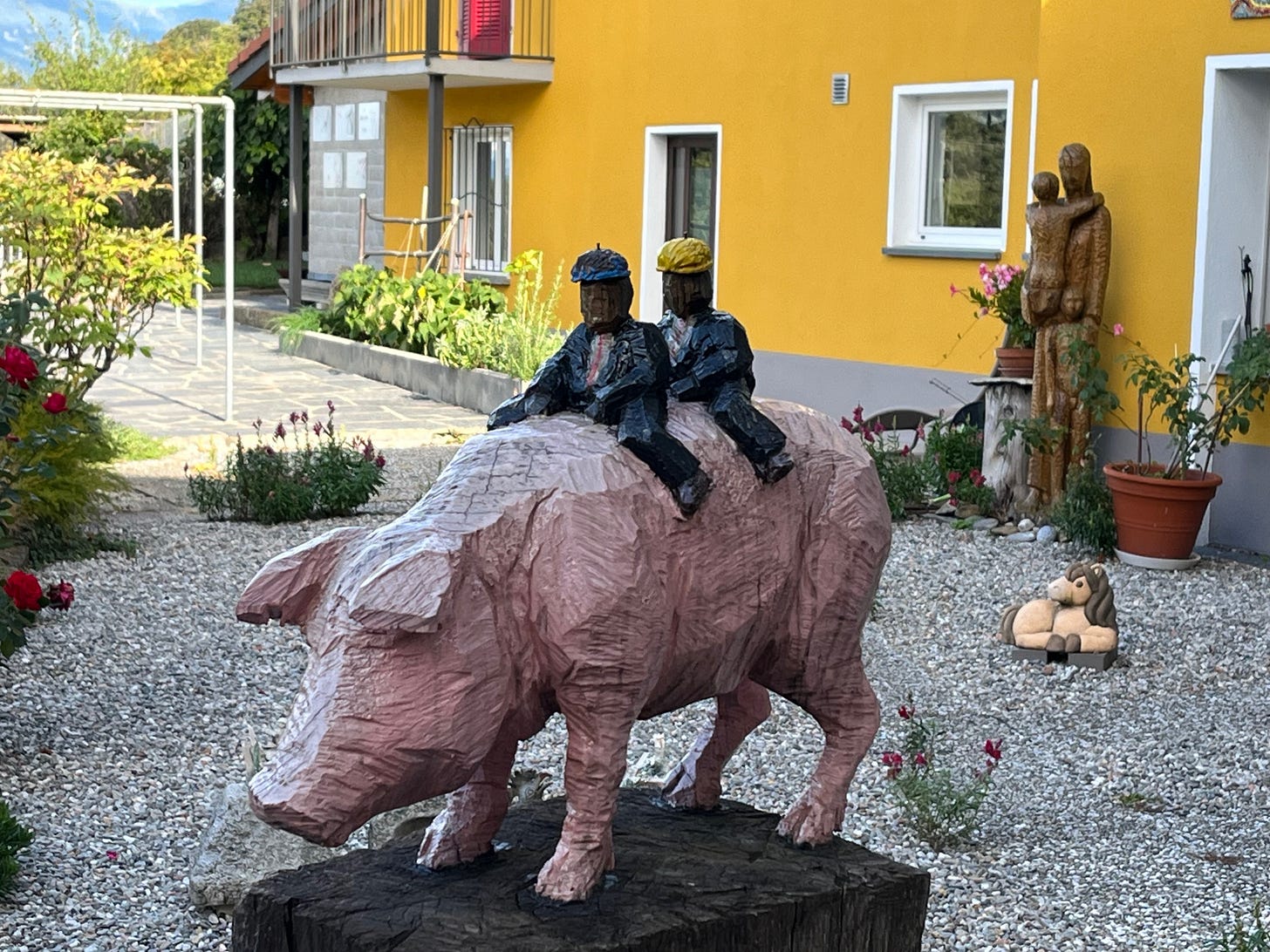
I haven’t watched television since the ‘80s. But if I had, I would have been impressed by Demi Moore’s Golden speech. Moore won best actress for The Substance. In the film, she takes a drug to regain her youth and beauty, with horrific consequences.
Moore said a producer dismissed her as a ‘popcorn actress’—one who would never be taken seriously. A woman told her “You will never be enough, but you can know the value of your worth if you just put down the measuring stick.”
Hollywood and its entire formulaic, misogynist, and tired complex is the reason why I watch British, Irish, Welsh, Scottish, Swedish, Danish, and French series. I don’t fear subtitles, I embrace them. And they’re not afraid of old actors, they embrace their skill.
Italian cinema is also experiencing a revival with more substantial narratives, and a greater focus on character and dialogue. Both make a story worth exploring.
One last thing to consider. Like Jochen Szangolies, I don’t talk about politics because it’s become a drain on energy (no discourse), and I’m not good at it. But, in this long essay on Saying ‘no’—power and reality, he has several points worthy of reflection.
“But there is an opportunity in being bad at things: it means you get to go slow. If you don’t grasp a mechanism in the large, break it down into its components; if you lack the intuition for great leaps, be explicit along every searching step. That way, sometimes, the outsider looking in might even notice something buried beneath the implicit assumptions just obvious to the seasoned practitioner (or expose themselves as a know-nothing out of their lane).”
On the value of ‘slow’ to find insights. Politics is about power, which hides and forgets responsibility, but also denies the boundaries of reality—hence its limits. Power wants more power.
To break reality’s limits, one changes the way it affects them (PR from propaganda.) After the muzzling, one replaces it with ‘the generation by models of a real without origin or reality,’6 or hyper-reality.
“The key conceptual innovation here is the role played by obvious fakes: where prior attempts to ensure the growth of power sought to furnish convincing surrogates, in hyperreality, the fake is deliberately obvious to guide the intuition of a real that it apes—which simply doesn’t exist. Whereas the spectacle merely obfuscates reality, the hyperreal replaces it.”
So power shoves and bullies reality to put it on its back foot. The next step is to recreate reality. When that gets mixed results, then shatter it—lies, lies, lies, lies, the convenient ‘obvious fakes.’ A strategy that aims to confuse and divide.
The best course of action for us to this loss of (common) reality is to have and maintain common bonds to each other. It’s the one thing we have—to cooperate and collaborate, reflect, and resist. This is how we build reality, we say ‘no’ to the strategy.
So these are some of the things I’d likely talk about if we had dinner. Along with how much I love good Italian breads, breakfasts, and wines. I’m curious to hear what has your attention these days that you find of value.
The full title is Culture: The Story of Us, From Cave Art to K-Pop. I read the book at the end of 2023, but I started to elaborate the next year. That’s how it often goes with books—hence why the notes are useful.
The full title is Self-Made: Creating Our Identities from Da Vinci to the Kardashians. There’s much to reflect upon in the book, which I won’t report here. The bit about Nietzsche and the ‘transvaluation of values’ is fascinating as it ties directly with today’s nihilism. As is the idea that the ‘masters’ valued life-affirming qualities like strength, pride, and sexual domination.
Note that the book, whose full title is The Need for Roots: Prelude to a Declaration of Duties Towards Mankind, starts from duties.
Milan-born Alessandro Manzoni penned the renown I Promessi Sposi (The Betrothed), the first example of a historical novel in Italian literature. If you’re curious to learn more about the book, I described the meals in part 2 of the series on food culture.
Count Giacomo Leopardi (1798-1837) was born in the small provincial town of Recanati during a time of political upheaval and unrest in Europe created by the French Revolution. he’s considered the greatest Italian poet of the nineteenth century. Here are some of his thoughts, if you’re curious.
I’ve spent my youth reading their works—and some I still re-read.
A short-hand to these names, which should be noted by conosseurs beyond Italian borders.
Neapolitan Federico De Roberto (1861-1927) wrote I Vicere (The Viceroy), set in Catania, where you can find the Regal Palace (above). The book (1894) is the saga of the noble Sicilian family of Uzeda di Francalanza (Spanish origin), whose eternal destiny is to dominate, as happens under Spanish domination and in the Kingdom of the Two Sicilies, with money and violence or, after the Expedition of the Thousand, through betrayal and pretense.
Palermitan Natalia Ginzburg (1916-1991) was a novelist, short story writer, essayist, and political activist. Ginzburg is considered one of the greatest Italian writers of the twentieth century (and the only woman in a men’s club), and her award-winning literary work is recognized for its exploration of family relationships and politics throughout fascism in modern times.
Sicilian writer and prince Tommaso di Lampedusa (1896-1957) penned Il Leopardo (the Leopard), one of the most successful literary works of 20th-century European literature. Soon to be a Netflix series, the book is set in the 1860s. It’s a spellbinding story of a decadent, dying Sicilian aristocracy threatened by the approaching forces of democracy and revolution. “The dramatic sweep and richness of observation, the seamless intertwining of public and private worlds, and the grasp of human frailty imbue Il Leopardo with its particular melancholy beauty and power, and place it among the greatest historical novels of our time.”
Piemontese Beppe Fenoglio (1922-1963) was a writer, partisan, and translator from English. He wrote about the rural world of the Langhe and the Italian resistance movemen. His novel Il Partigiano Johnny was published posthumously. After 8 September 1943, Northern Italy is occupied by the Germans. The book describes the collapse of the Italian army, soldiers escape to the mountains to set up a resistance. Many civilians do the same, and Johnny, an English literature student, is among them.
Roman-born Alberto Moravia (1907-1990) was a novelist and journalist who wrote about modern sexuality, social alienation and existentialism. He is best known for his novels Gli indifferenti, Il conformista and La ciociara, which were adapted into films by famous directors.
Bologna-born to a military family that moved frequently in the Kingdom of Italy, Pier Paolo Pasolini (1922–1975) was a poet, film director, writer, actor and playwright. He’s considered one of the defining public intellectuals in 20th-century Italian history, influential both as an artist and a political figure. Known for his subversive work, he directed the films from Trilogy of Life and Salò, or the ‘120 Days of Sodom’ (1975.)
Paris-born to Italian parents who fled Italy, Amelia Rosselli (1930-1996) was a poet, musician, and musicologist. She wrote poetry in English, French, and Italian, influenced by Surrealism and experimentalism, and translated by several authors. She’s considered to be one of the best Italian writers of the post-WWII generation. Here’s some of her poetry.
Roman Elsa Morante (1912–1985) was a novelist, poet, translator and children's books author. She’s best known for her novel La storia (History, 1974), a bestseller that depicts the events of World War II in Rome. The book hit Italy like a storm, quickly becoming the most talked about book of the year. In the first year, it sold, in Italy alone, a record 800,000 copies (at a time when a successful novel rarely sold more than 100,000 copies.) It’s the story of a partly Jewish woman, Ida Ramundo, and her two sons Antonio and Giuseppe in Rome, during and immediately after the Second World War.
Greek-born Giorgio de Chirico (1888–1978) was an artist and writer interested in the revival of Classicism. With Carlo Carrà and Giorgio Morandi, he founded the style of Metaphysical painting and was an important source of inspiration for artists throughout Europe in the inter-war years, particularly the surrealists.
A thought by post-structural sociologist and philosopher Jean Baudrillard.





